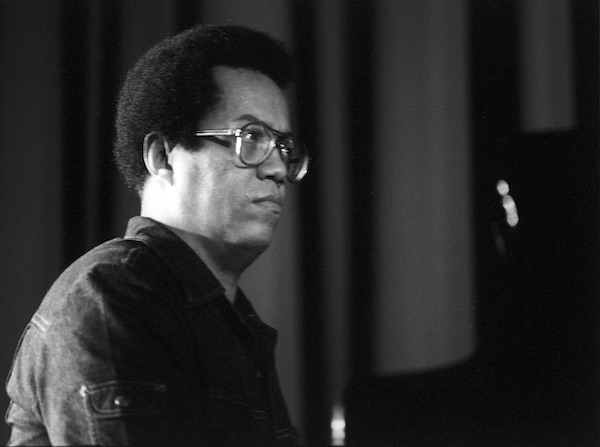Oct 28, 2025 10:47 AM
In Memoriam: Jack DeJohnette, 1942–2025
Jack DeJohnette, a bold and resourceful drummer and NEA Jazz Master who forged a unique vocabulary on the kit over his…

Cedar Walton in 1977
(Photo: Nils Winther/SteepleChase Productions)As we wade into the third decade of the 2000s, historical reissues from the 20th century seem to be taking on an increasing significance in the jazz world, granting listeners a new view of old bands and older tunes. This quartet of recent reissues demonstrates the wide spectrum of material that continues to be uncovered from label vaults, venues and community archives: Encompassing many of the threads that have been weaving themselves together since the 1960s, these recordings represent wildly different approaches to the genre.
Johnny Griffin & Eddie “Lockjaw” Davis, Ow! Live At The Penthouse (Reel To Real 003; 48:29 ***1/2) This album documents “The Tough Tenors,” Griffin and Davis, at the tail end of a three-year collaboration that saw them cut a handful of LPs. The live session in Seattle, recorded in 1962, showcases both doing what they did best at the time: confident, fast-paced and virtuosic turns through multiple choruses of hard-swinging standards. Davis, who had perfected his approach as one of the dueling tenors of the classic Count Basie Orchestra in the 1950s, grounds himself in swing-era giants like Ben Webster and Lester Young; Griffin, already known as a champion of the cutting contest format from records like A Blowin’ Session, incorporates more bebop language into his improvisation. The tenors somehow never lose steam, despite the long solos and blazing tempos, interspersing barn burners with some surprising curveballs like “Bahia” and “Sophisticated Lady.”
Azar Lawrence, Summer Solstice (Jazz Dispensary CR00262; 40:58 ***1/2) This reissue from the mid-1970s Prestige catalog features Lawrence, one of the few headliners from that era still active today, exploring the fertile intersections of straightahead, bossa nova, fusion and free-jazz. Two compositions by Brazilian guitarist Amaury Tristao, “Novo Ano” and “Highway,” offer balanced counterpoint to Lawrence’s evocations of early-’60s Coltrane. “Summer Solstice,” the cathartic, fast-paced title track, yields the most striking moments of this unique group’s powerful sound, a synthesis of frenetic groove and determined energy that characterizes the best of the eclectic sounds of the 1970s. Featuring a bevy of talented sidemen, from bass virtuoso Ron Carter to Brazilian trombone superstar Raul De Souza, Lawrence’s ensemble brings together a spirited mixture of grooves and riffs that displays a vibrant conversation that was flourishing in Los Angeles among U.S.-based and Brazilian innovators.
Cedar Walton Quartet, Third Set (SteepleChase 1179; 51:06 ****) Recorded in Copenhagen, Denmark, in 1977, this classic set from the legendary pianist has been reissued by Steeplechase producer Nils Winther. Walton’s quartet is a paragon of hard-swinging 1970s post-bop: The bandleader’s impeccable pianism presides over the dynamic rhythm section of drummer Billy Higgins and bassist Sam Jones, with Bob Berg’s muscular tenor adding energy to the proceedings. The all-star group performs exploratory renditions of two Walton originals, a Billy Higgins composition and two Thelonious Monk standards. The ensemble takes plenty of time to explore each of the five songs, showcasing each members’ brilliant improvisatory solos. By the time the band gets to the two Monk classics at the end of the album, its immersed in delightful, no-holds-barred blowing; Walton and Higgins’ final solos on “Rhythm-A-Ning” are both masterpieces of the genre.
Tribe, Hometown: Detroit Sessions 1990–2014 (Strut 210; 82:09 ****) The Tribe collective—founded during the 1970s by community organizers saxophonist Wendell Harrison and trombonist Phil Ranelin—has spearheaded jazz initiatives in Detroit since its inception. This expansive compilation highlights the troupe’s activity starting in the 1990s, when the effects of deindustrialization already had taken a toll on black life in the city. But this album is no lament: From Ranelin’s exuberantly funky “Freddie’s Groove” to the title track’s simmering riffs, penned by longtime Tribe organizer Pamela Wise, it is a testament to the vibrancy of black Detroit’s creativity in the face of the city’s struggles. Brimming with power and joy, Hometown: Detroit Sessions 1990–2014 serves as a reminder of the sounds that keep the flame of Black radical possibility alive today. DB

Jack DeJohnette boasted a musical resume that was as long as it was fearsome.
Oct 28, 2025 10:47 AM
Jack DeJohnette, a bold and resourceful drummer and NEA Jazz Master who forged a unique vocabulary on the kit over his…

Always a sharp dresser, Farnsworth wears a pocket square given to him by trumpeter Art Farmer. “You need to look good if you want to hang around me,” Farmer told him.
Sep 23, 2025 11:12 AM
When he was 12 years old, the hard-swinging veteran drummer Joe Farnsworth had a fateful encounter with his idol Max…

D’Angelo achieved commercial and critical success experimenting with a fusion of jazz, funk, soul, R&B and hip-hop.
Oct 14, 2025 1:47 PM
D’Angelo, a Grammy-winning R&B and neo-soul singer, guitarist and pianist who exerted a profound influence on 21st…

Kandace Springs channeled Shirley Horn’s deliberate phrasing and sublime self-accompaniment during her set at this year’s Pittsburgh International Jazz Festival.
Sep 30, 2025 12:28 PM
Janis Burley, the Pittsburgh International Jazz Festival’s founder and artistic director, did not, as might be…

Jim McNeely’s singular body of work had a profound and lasting influence on many of today’s top jazz composers in the U.S. and in Europe.
Oct 7, 2025 3:40 PM
Pianist Jim McNeely, one of the most distinguished large ensemble jazz composers of his generation, died Sept. 26 at…